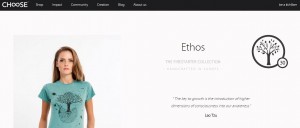I never believe the fact that sustainability is a natural, inherent consideration when customer makes their daily purchase decisions. It often comes as an after fact justification. This course has reaffirmed my thought that in order for green to be “the choice” for most consumers, the situation has to be made very restrictive and defined for this to happen. Great must come first, and green may be then added into the decision-making formula. Phillip Haid digested the myth of conscious consumerism via Sustainable Brands, where he identified the discrepancy between people’s normative and positive thinking and actions.

Throughout of the course, we encountered countless data, indicating that sustainability has become a new trend in the society. Jennifer Elks claimed that Millennial will drive sustainable purchasing trends (as mentioned in my January Archive Journal), and Nielsen’s Global Survey on Corporate Social Responsibility, stated that 55% of global online purchasers are willing to pay premium to companies whose corporate responsibility is geared towards some charitable and supportive mission that is not purely monetary driven. Nevertheless, where are the real changes? If this many claim that they will be committed and dedicated, why is green purchasing still situating at a niche market? Sustainability may not be unfamiliar to the corporate and business world, because there is inherent cost reduction and efficiency enhancement associated with such initatives. Therefore, it makes strategic sense for any company to make the shift, because it achieves desired result. Nevertheless, to the general consumers (not the “true blue-green type”), green initiative still remains dispensable. In other words, they are indifferent towards green products and regular prototype. The only situation that I envision that the green product is favoured, is that the green alternative has a brand image and market reputation to be of higher quality accompanied with equal price or with slight, insignificant adjustment for premium. In short, unless our thinking can be “prep-programmed”, revolutionized, or consciously adjusted for when making purchasing decisions, we may have to reply on business and government to make every possible choice on the shelf green to be green purchasers.
 Another myth tackled by Haid relates to motive. This one challenges the impossibility of co-existence of economic drive and social drive of a company, which mainly results from cynicism and distrust from purchasers. It would be overly extreme to claim that business functions with money and money only. I feel that this type of thought is fading in the society, which puts us as a transitioning stage between pure awareness to taking actions. There is a long way to go, but it is trending positive. Hopefully there could be a day where changes can be accelerated. As the results become observable, the process can be further quickened, forming a virtuous cycle of development.
Another myth tackled by Haid relates to motive. This one challenges the impossibility of co-existence of economic drive and social drive of a company, which mainly results from cynicism and distrust from purchasers. It would be overly extreme to claim that business functions with money and money only. I feel that this type of thought is fading in the society, which puts us as a transitioning stage between pure awareness to taking actions. There is a long way to go, but it is trending positive. Hopefully there could be a day where changes can be accelerated. As the results become observable, the process can be further quickened, forming a virtuous cycle of development.




